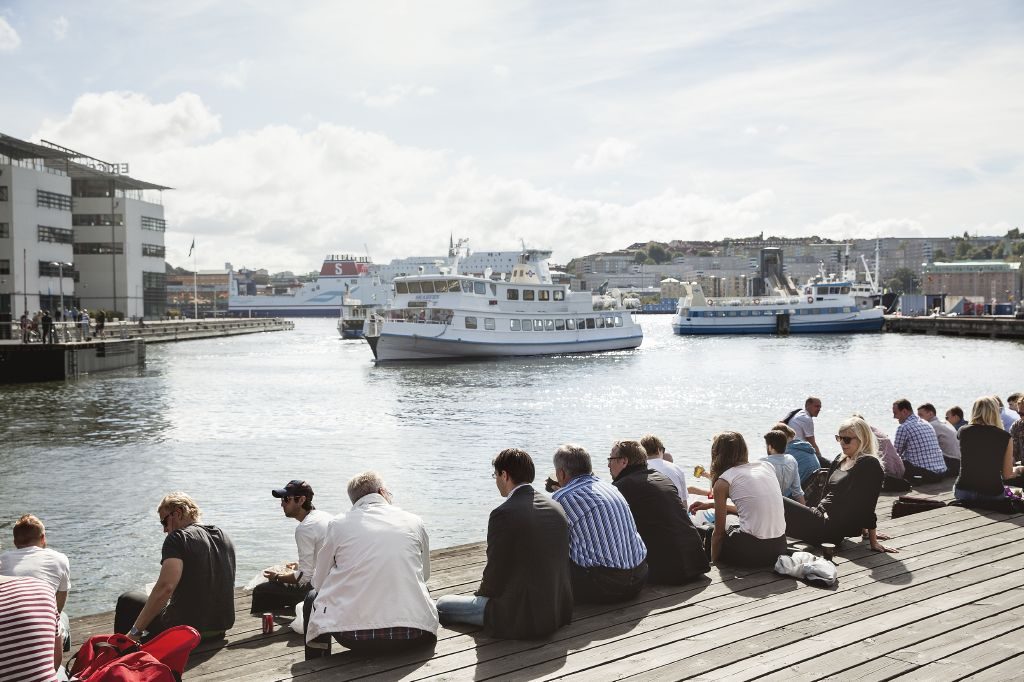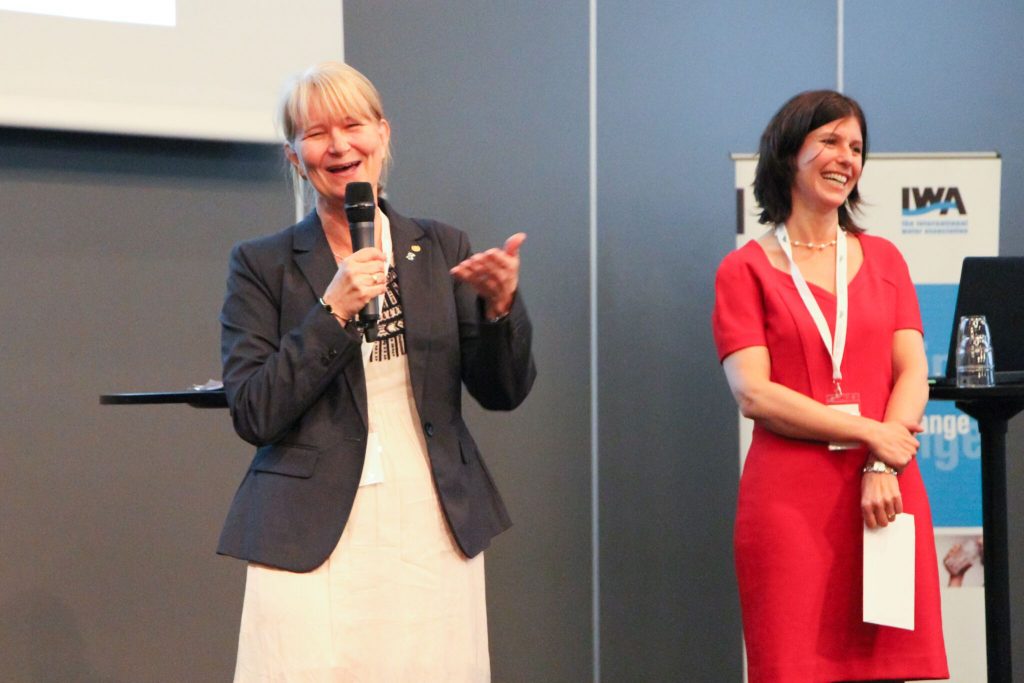Water from all Sides
Becoming water-wise is their prerogative
Built into a low-lying swamp area near the Göta River estuary, Gothenburg finds itself in a strategic yet vulnerable place. Flood risks and sea level rise are the two most important challenges the city is now facing. They are currently bracing for a 1 meter rise in sea level by the year 2100, as well as increasing flooding events caused by heavy rains into the Gota River. Fortunately, Gothenburg has not dealt with many major crises or natural disasters over the last decades. Still, they are looking towards the future and focusing on collaboration across administrations and stakeholders to ensure early adaptation and mitigation against the impacts of climate change.
The City Planning Authority (CPA) of Gothenburg, established in 1960, has always invested in planning. Since 2004, the CPA is mandated to coordinate climate adaptation within the municipality. The CPA has been given the task of enabling collaboration across the urban sector to spur climate action. The Strategic Climate Programme for Gothenburg, coordinated by the Environmental Office, and “Green Gothenburg” are good examples of collaboration between city administrations, companies and a range of industrial and research experts. In 2017, Gothenburg endorsed the IWA Principles for Water-Wise Cities, wasting no time in incorporating this framework as reinforcement to their city planning. The Mayor of Gothenburg, Ann-Sofie Hermansson, presented urban water management as a constant and critical part of the sustainability agenda. In Gothenburg, “water wisdom” means smart adaptation as city life is becoming ever more entwined with water.

The area on the north side of the river, known as Norra Älvstranden, has undergone a rapid development. Where there used to be heavy industries a whole new neighborhood has emerged with restaurants, cafés and a vivid life centred around the docks and the waterfront.
Gothenburg's Urban History
Gothenburg, since its founding over 400 years ago, has had a central focus on water. Gothenburg is an important coastal city, with a significant port between Oslo and Copenhagen and one of the largest rivers of Sweden the Göta Alv.
The City Planning Authority (CPA) of the City of Gothenburg established in 1960 has always invested in planning, and since 2004, has been mandated to coordinate climate adaptation in the municipality. The CPA enables collaboration across the urban sector to foster climate action. Ulf Moback, of the CPA, and Lena Blom, Department of Sustainable Waste and Water, can both attest to the CPA’s pivotal role in developing urban resilience in Gothenburg
The Strategic Climate Programme for Gothenburg, coordinated by the Environmental Office, and “Green Gothenburg” are examples of collaboration between city administrations, companies and a range of experts from both the industrial and research worlds.
Key challenges for this coastal city
Although Gothenburg has not faced many natural disasters, one important event, however, is the Tuve Landslide that occurred in 1977. Landslides are one of the more common hazards in Sweden following heavy rains. The Tuve Landslide lasted only 6 minutes and destroyed 65 homes, resulting in the evacuation of 700 people from the area. Eight people were killed, and many more were injured. This sharpened people’s sensitivity to natural disasters and the necessity of prevention.
“The city has since then ensured better control of landslides. We have made an inventory of risk areas, [and] have also [worked on] landslide monitoring. In sensitive areas where landslides can cause [property damage], we have made [assessments].” Ulf Moback, City Planning Authority.
Gothenburg is not only facing issues with excess water from the sky, but also from the sea. The city is currently bracing for a 1 meter rise in sea level by the year 2100, as well as increasing flooding events from the Gota River and heavy rains. Since the city has expanded over wetlands, the city sits on soft sediments and subsidence is also another major issue in the region.
Case Study: Valen Ecology Project
This project was presented by Gothenburg Recreational Authority in 1985 so the Valen Nature Reserve would become a multipurpose park with sports areas for citizens and an area with constructed ponds and wetlands to treat the stormwater coming from industrial areas. The goals are to limit water pollution from industries, to protect and increase biodiversity and to create an inviting area for citizens.
What has Gothenburg Achieved Since Endorsing the Principles?
Collaboration is key in this Swedish city. With improved resource allocation and alignment across departments, Gothenburg is sure to make an impact with and for its citizens for a water-wise future.
Since the city’s formal endorsement in their hometown, Gothenburg has revitalized and renewed activities within its departments. Roles and responsibilities of urban actors have been realigned to ensure best practices in urban water management. The municipality has even employed Serious Gaming to help departments build capacity and improve planning processes for stormwater and heavy rainfall.
The coordination of all departments related to urban water services has been supported by re-allocated compensation outside of the usual water tariffs to harmonize water service provision and reduce impacts from heavy rainfall. As part of this, the municipality has signed an agreement with the Traffic Office on better coordination and management of stormwater and cloudbursts. These new mechanisms will provide further concerted efforts towards Gothenburg’s slogan “The Best City when it Rains!”
4 Levels of Action - Gothenburg’s Progress Towards the Principles
Regenerative Water Services
• EPA & Swedish Water Organization developed guidelines and regulations.
• CELSIUS Project- sewage heat recovery focus on water loss through reducing water leaks.
• Freeport- low carbon footprint & green technology. RiverCity another example of design around water.
• Stormwater Policy
• Combining Water and Waste management in one City department.
• Work is focused to reduce vulnerability and to reach a robust system that resists climate events.
Water Sensitive Urban Design
• Rain gardens in the city, swamps, and wetlands for stormwater treatment.
• Planning and building act.
• Regulations for minimum floor level for all new construction.
• Freeport with increased liveability- water as the strength of this new urban core.
• The city has a program from environmental construction to reduce pollution form urban materials. This is inspired by the Chemical Action Plan for the City of Gothenburg.
Basin Connected Cities
• New regional plan for water resources was initiated in 2014, as there is a need for more secure control of the raw water quality.
• Work within the regional water plan e.g. water protection areas, identification of the value of water.
• Barrier against high sea levels and higher walls for the Göta älv River. Core strategy in 2009 on recommendations and flood walls and gates. Swedish crisis management.
Water-Wise Communities
• Public consultation processes and community involvement.
• Water, Waste, and Urban professionals working together.
• Example of Freeport developed through co-actor and open access processes.
• Collaboration across sectors- policies created.
• Leaders are aware of risks and are taking action based on a strong vision.
Blog posts
Latest opinions and insights relevant to the water sector



